Eat Your Veggies!
CULINARY
creations
The once humble vegetable is taking its fair market share as a main course or stand-alone powerhouse staple. While meat, poultry, and seafood analog makers are focusing on making vegetables look, feel, and taste like meat, consumers immersed in the plant-based trend are demanding better and more creative use of vegetables that are recognizable as vegetables.
As the vanguard in new and coming food trends, chefs in restaurants across the US are going upscale veggie-centric, some even to the point of closing their doors on meat entirely. These pioneers are pushing the envelope on using vegetables on their own merit as the focus, and research chefs are paying attention.
One of the earlier adopters of this big dive into the vegetable garden is Amanda Cohen, chef of the restaurant Dirt Candy in New York. For more than a decade, Dirt Candy’s mission has been to show that vegetables, while being nutritious and versatile, can also taste amazing without playing second or third fiddle to an animal protein entrée. Cohen takes everyday vegetables and turns them into dishes such as broccoli “hot dogs,” topped with a warm broccoli kraut and a Carolina mustard sauce. Another favorite is her Tomato Cake with Smoked Feta.
By MICHAEL JOY, Contributing Culinary Editor, and David Feder, Executive Editor-Technical
Photo courtesy of: Think Better Foods, LLC/Eat Vegify
Thanks to the plant-based revolution, vegetables have emerged as a standout ingredient in multiple formulations.
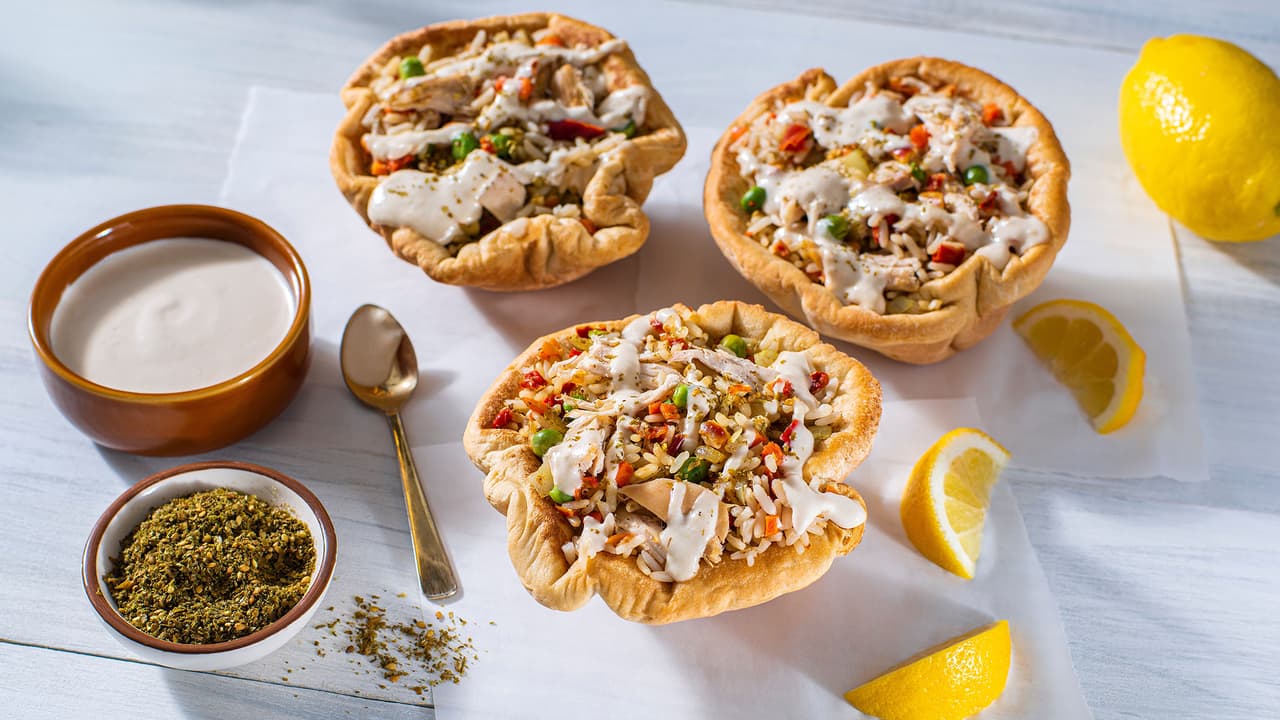
Trending hot are rice and veggie bowls that keep produce front and center and present as quick and easy whole meals. Photo courtesy of: Riviana Foods, Inc.
HanGawi, another trend-setting New York restaurant, takes typically beef-heavy Korean cuisine into the vegetarian zone. The ssam bap, a rice and lettuce wrap, consists of dark, leafy lettuce and thin, herbaceous sesame leaves rolled up with creamy slices of avocado, crunchy bean sprouts, pickled daikon, carrot, cucumber, radish, and three rice options—white, brown and a nutty, purple-tinged multigrain. Topped with miso ssam sauce, the dish showcases a symphony of flavors and textures that demonstrate vegetarian is not merely the absence of animal protein.
Taking the plant-centered shift in hand, a number of product makers are offering meals and sides that showcase veggies at their brightest and most flavorful. One such company is Good Stock Commissary, making and shipping packets of fully nutritious, heat-and-eat fresh vegetable soups that can act as a meal in themselves. While some have meat or poultry, many rely on just a hearty, rich combination of produce.
“Our biggest challenge was that, from the beginning, we insisted on using real, fresh whole vegetables,” declares Ben LeBlanc, Good Stock's owner and founder. “We are constantly being pitched shortcuts, but we just won’t do anything other than use real vegetables, even though at the rate we plow through fresh product it’s a far more expensive approach.”
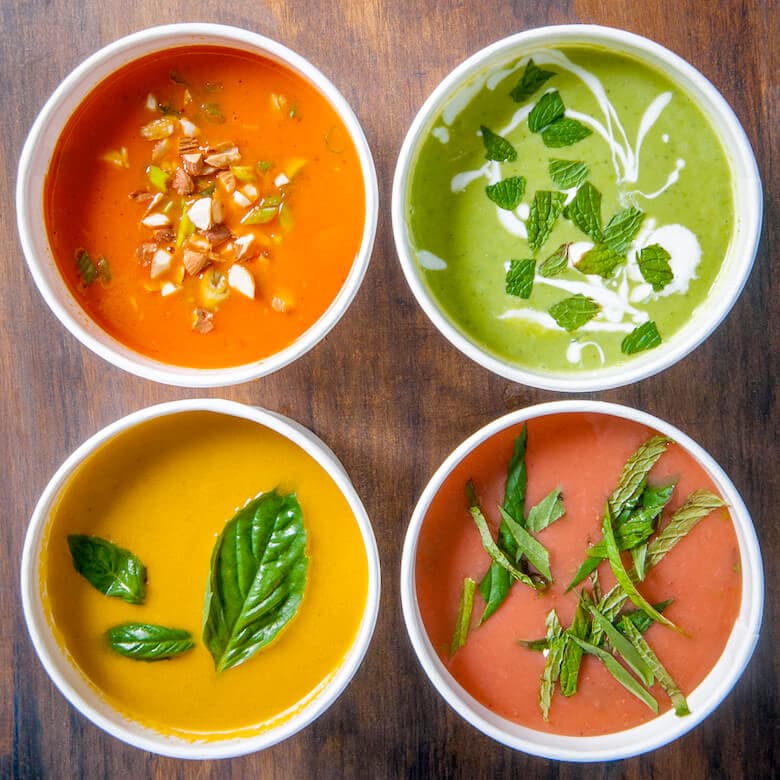
Product developers focusing on vegetables are pushing plant-based benefits beyond creating analogs for animal products. Photo courtesy of: Good Stock Commissary
● Roots and rhizomes, a wide category ranging from ginger and turmeric to watermelon radishes, parsnips, and celery root.
● Tubers, including yams and potatoes, with white and purple yams (see below) becoming mainstream. Potato varieties, such as fingerlings, tiny whites, baby tricolor potatoes and Baby Dutch Yellow potatoes, and Yukon Golds.
● Winter squashes, too, are hot. Not only is the perennial favorite Butternut squash having a renaissance, but consumers have shown strong interest in hubbard, buttercup, calabaza, carnival, turban, kabocha, and delicata squashes.
Schueller points out that vegetables in the Latin category also have been trending high. This category includes chayote squash, cactus pads, and every imaginable variety of chili pepper.
Five-Year Plan
Earlier this summer, Melissa’s World Variety Produce, Inc., retailer of the majority of exotic vegetables and fruits in the US, released its forecast of the top trending veggies expected to continue growing in popularity. Robert Schueller, director at Melissa’s and premier produce prognosticator, provides this list.
● Fresh mushrooms, including white buttons, creminis, shiitakes, oysters
● Dried mushrooms, including chanterelles, morels, porcinis, and dried oysters.
● Eggplant, with the classic medium and large purple eggplants (Italian and American Globe) making way for the Graffiti eggplant; long, skinny Chinese and Japanese eggplants; Indian eggplant; the heirloom white eggplant that gave the vegetable its name because it’s the size, shape, and color of a hen’s egg; and golf ball-sized green and white striped Thai eggplant.
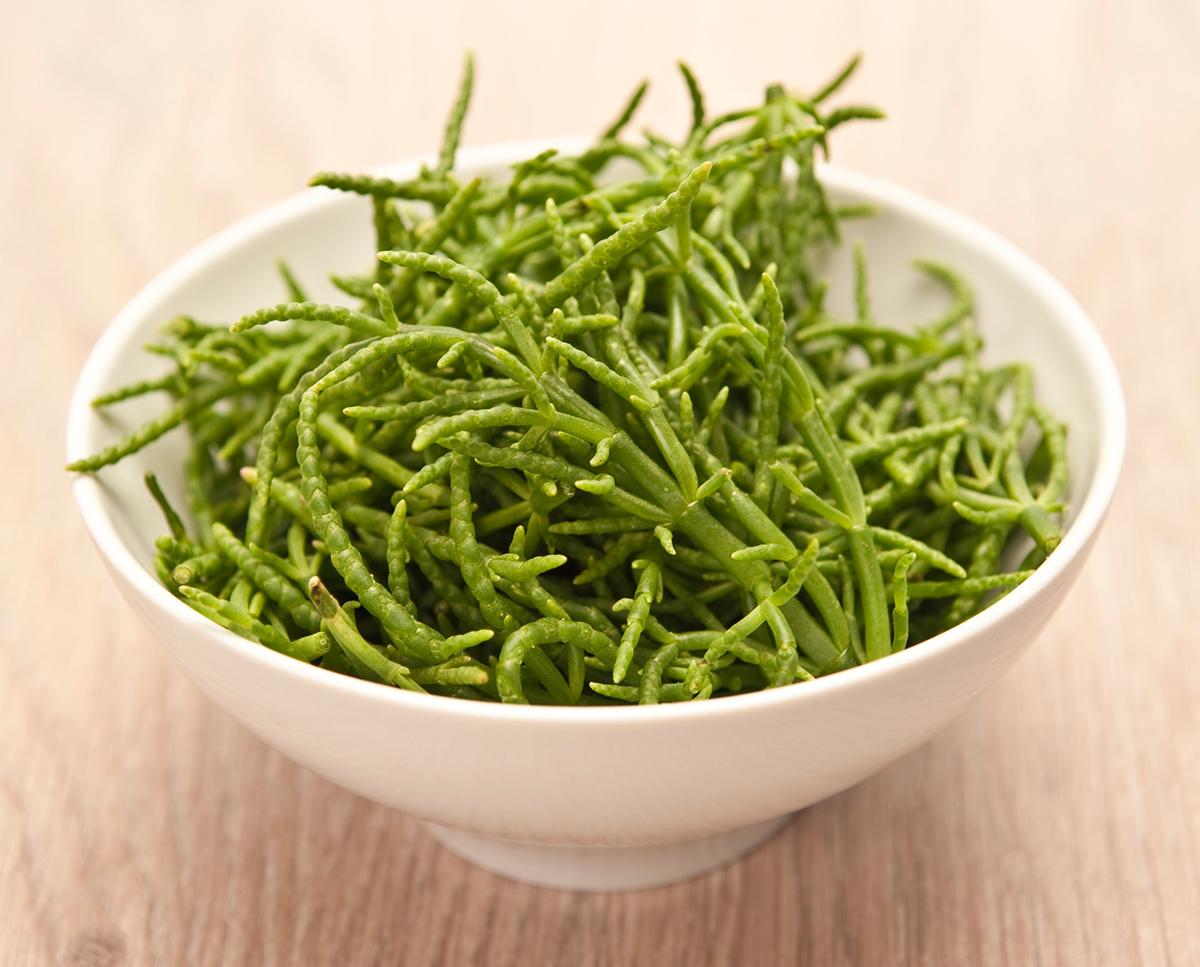
Photo courtesy of: Getty Images / Mark Gillow
As with any product engaging in batch production that uses hand-processed fresh vegetables, keeping the flavors and textures “just made” can be daunting. In the case of Good Stock, the daring way of addressing this was to look at the issue from a different perspective. “It both is and isn’t a concern of ours,” explains LeBlanc. “Because on the one hand, it’s natural for veggies to change color, shape, etc. as they’re cooked, we’re committed to natural, so we’re not going to fake anything.”
LeBlanc hastens to add that they are able preserve the look and texture of vegetables as much as possible by “preparing the vegetables properly before cooking, and cooking for the right amount of time, but no longer than that. For example, in the soups that contain leafy green vegetables, the greens are added right at the very end of cooking so that the vibrancy of their green color is maintained.”
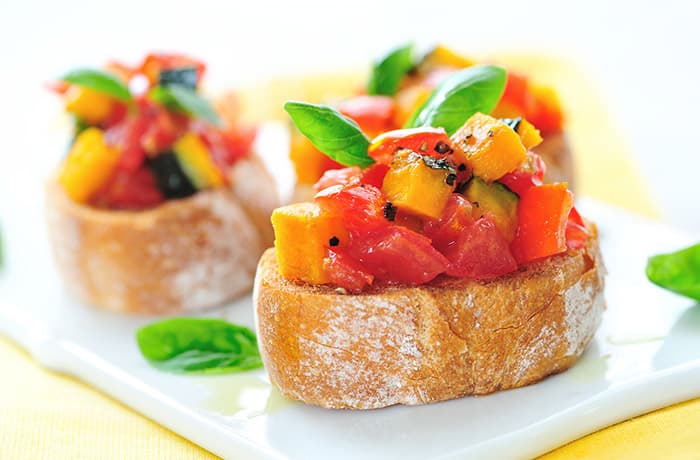
Technology makes it possible to utilize individually quick frozen vegetables that retain the flavors and nutrition of fresh. Photo courtesy of: Van DrunenFarms, Inc./Futureceuticals
Off the Beaten Path
There has been a wealth of interesting and exotic vegetable introductions in the past few years, reflecting the US consumers' growing love affair with produce. Some, like the purple yam, arrived on the heels of the global cuisine movement. The bright purple flesh of the purple yam has been a staple in Southeast Asia since ancient times. In the Philippines, it is called ube and receives wide usage in everything from side dishes to soups, and sauces to desserts. One of the most common uses of purple yam in the Philippines is for ice cream.
The watermelon radish is another interesting and versatile vegetable that has made its way into the mainstream. Named for its looks—just like a miniature watermelon—it is an heirloom vegetable that originated in Asia. As with all radishes, it is a member of the Brassica family, which also includes cabbage, broccoli, Brussels sprouts, and arugula. Watermelon radishes have been showing up with increasing frequency in prepared salads that are sold fresh and even in retail salad mixes.
Seaweed is a fast up-and-comer, prized for flavor and powerful nutrition benefits, including the most concentrated source of the nutrient iodine Seaweed salads and seaweed pickles have been appearing with increasing frequency. One underappreciated seaweed vegetable is samphire. Although still on the fringes, it continues to show great potential to trend upward.
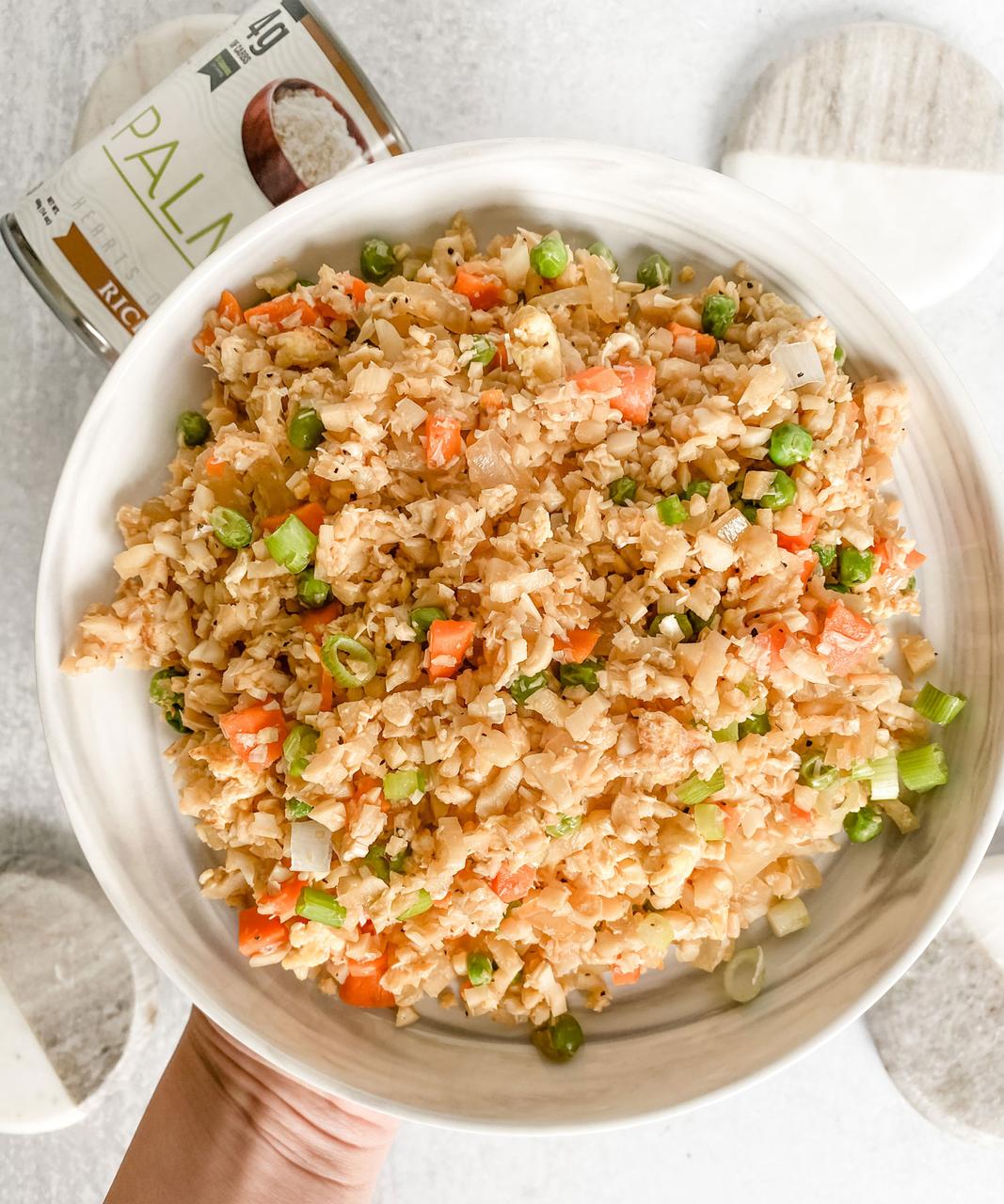
Riced cauliflower began a trend that has now expanded to a variety of other vegetables, such as newly launched riced hearts of palm. Photo courtesy of: OA Foods, LLC
Samphire grows in cold water shores and marshlands and resembles branched green beans. It also goes by the name “sea beans.” The unusual vegetable could be of particular interest to product makers as it is naturally salty (rinse them thoroughly and do not use added salt in the formulation), and has a refreshing flavor that marries asparagus with a refreshing and crisp briny note and crunchy texture.
Rice Plays Nice
Although a grain, rice has been chosen by multiple food makers as a premier partner to cozy up to vegetables. The most popular of these products are one-meal, easy-prep rice bowls. For some makers, such as Good Stock Commissary, not all offerings in this category are strictly vegetarian. However, many have been foregoing that bit of poultry or other animal protein and simply packing their rice bowls with bright, flavorful vegetables.

Increasingly, vegetables are finding their way into products as a substitute for grains, such as flour made from powdered cauliflower. Photo courtesy of: B&G Foods North America, Inc./Green Giant


Produce sales have risen strongly, but organic produce sales are really booming, with an increase of more than 9% over last year, according to the Organic Produce Network and Category Partners.
Rice and vegetable combinations seeing the greatest success typically play down seasoning—perhaps a hint of herbs—and start with high-quality rice. Typical additions to round out protein levels and flavor are beans, or peas, corn, sweet peppers, and carrots. The preferred packaging is usually a 10-minute boil-in-bag or frozen in a microwaveable bowl.
With imitation being the sincerest form of flattery, riced cauliflower is practically the “veggie du jour” in the US. Processing vegetables to resemble or perform like rice has abounded in the past several years, as carb-conscious consumers embrace these products as a grain-free alternative to rice. Consumer interest is so positive that the trend now has expanded to include “rice” made from chickpeas, carrots, broccoli, and—recently launched—Palmini brand “rice” from hearts of palm, by OA Foods, LLC.
Fresh and frozen riced veggies of some sort are now universally available. B&G Foods North America, Inc.’s Green Giant brand offers a series of frozen riced products, including blends of cauliflower and sweet potato and a medley of cauliflower, carrots, onions, and peas. Utz Quality Foods, Inc.’s Boulder Canyon brand features a variety of plain and flavored rice and vegetable combos, such as Thai Curry Riced Carrot and Caramelized Onion Riced Sweet Potato.
Pushing Veggies
One company that has been quite successful in getting great tasting veggie-rich foods into people’s hands is Veggies Made Great. New Classic Cooking, LLC’s Veggies Made Great advertises their mission as striving to “get Americans hooked on veggies.” The company proudly states, “Veggies: Our #1 Ingredient” on their packaging and make sure that vegetables are the first ingredients on all their product labels. Even the Chocolate Muffin is loaded with vegetables.
Veggies Made Great products are also allergy friendly, gluten-free, soy-free, and peanut/tree nut-free and are carried by most nationwide supermarket chains. They also have several dairy-free options to choose from. Veggies Made Great has experienced rapid growth in the past five years, and its products have won numerous food industry awards. Interestingly, the company promotes being veggie-forward rather than plant-based. PF
Michael Joy, Director of Product Development for Park 100 Foods in Indianapolis, is a founding member and past president of the Research Chefs Association. The graduate of Johnson and Wales University has held multiple Executive Chef and Executive Pastry Chef positions and worked in food R&D for such companies as Grace Culinary Systems, McCormick and Co., Firmenich, Inc., and The Original Soup Man chain. He can be reached at mjoy@park100foods.com.
August 2021
